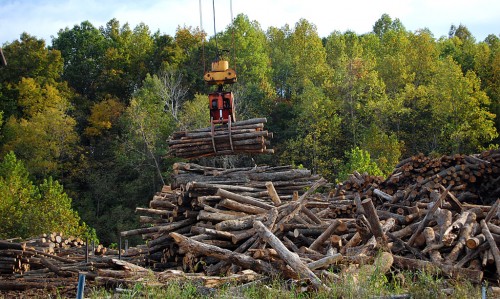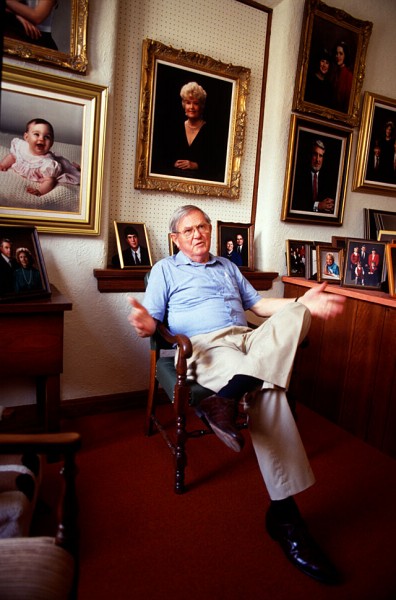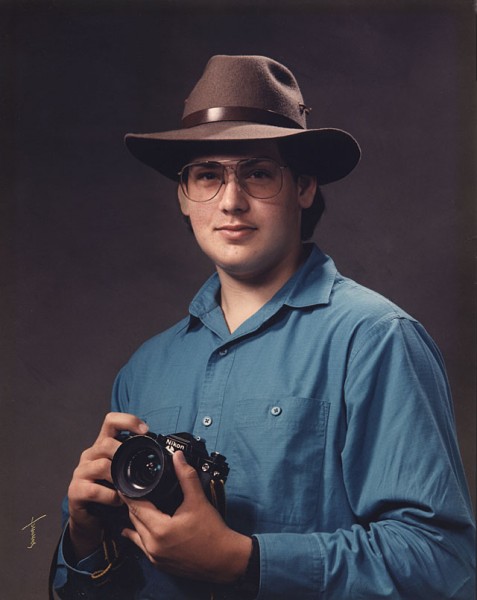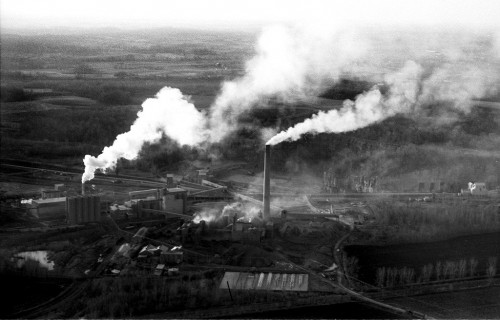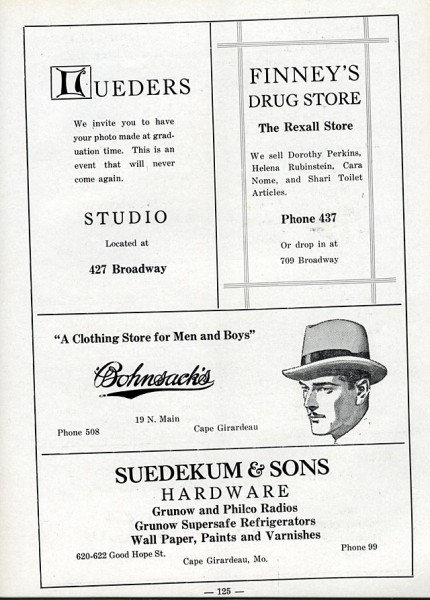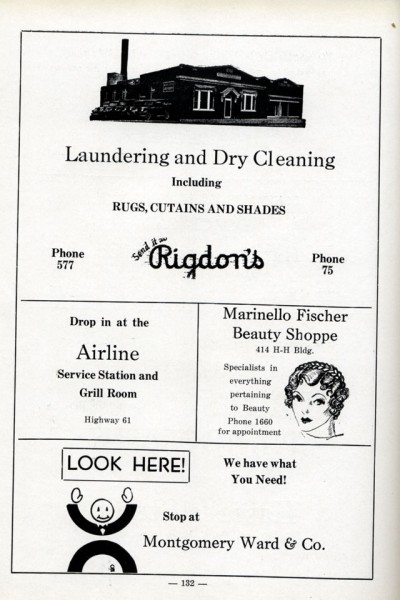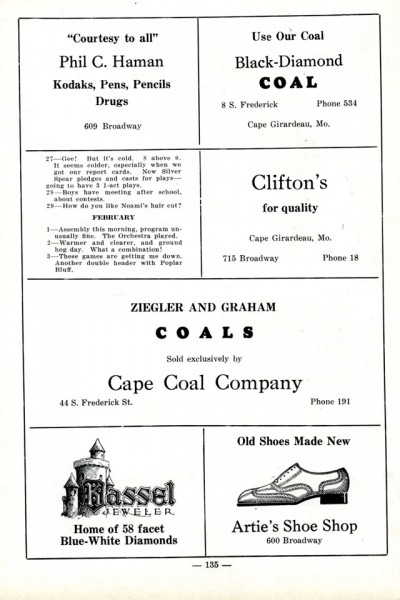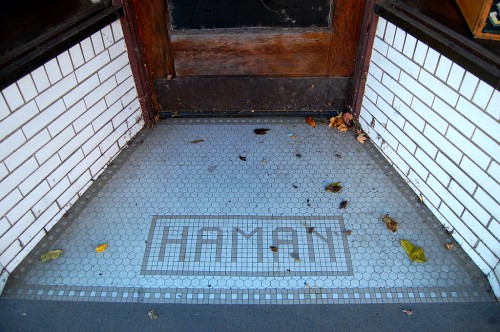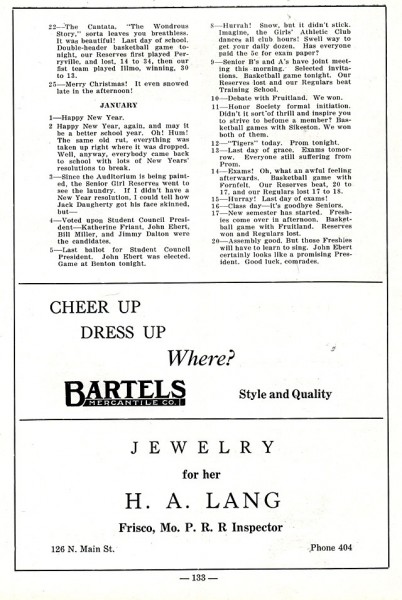 Brother Mark wanted to see the Eisleben Lutheran Church in Scott City after we had an excellent lunch at The Piebird Cafe in Fruitland to celebrate Mother’s 90th birthday. After seeing the church, Mother said she thought the road we were on would take us to the river, so we went exploring. When we got to SEMO Port, we came upon a huge mound of logs with a big, yellow LeTourneau pedestal crane presiding over it. (Click on any photo to make it larger.)
Brother Mark wanted to see the Eisleben Lutheran Church in Scott City after we had an excellent lunch at The Piebird Cafe in Fruitland to celebrate Mother’s 90th birthday. After seeing the church, Mother said she thought the road we were on would take us to the river, so we went exploring. When we got to SEMO Port, we came upon a huge mound of logs with a big, yellow LeTourneau pedestal crane presiding over it. (Click on any photo to make it larger.)
Missouri Fibre turns logs into wood chips
We asked a couple of men working on a piece of equipment near the road, what was going on. They said they worked for Missouri Fibre Corporation, turning scrap wood into wood chips.
“In fact, if you pull up to where that sign is, you can watch the crane operator 90 feet up in the air unload a truck.”
Like Pick-Up Sticks for giants
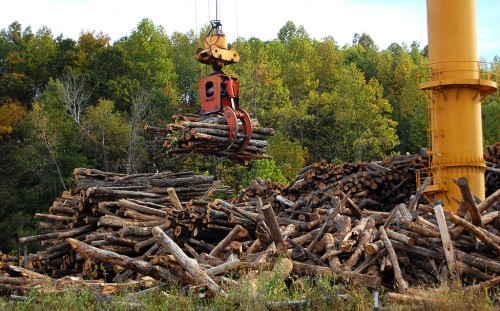 We watched the operator scale the big column, get into his “office” and set the crane in motion. He dropped the grapple gently over a stack of logs on a semi, then gradually caused its fingers to wrap around them.
We watched the operator scale the big column, get into his “office” and set the crane in motion. He dropped the grapple gently over a stack of logs on a semi, then gradually caused its fingers to wrap around them.
When he was satisfied he had them in his grip, he lifted them off the truck, usually without dropping any, and gave them a ride to the big stack. It was like playing with Giant Pick-Up Sticks. He made it look so easy that Mark commented, “That looks like fun. I could do that all day long.”
Tim Hart, mill manager
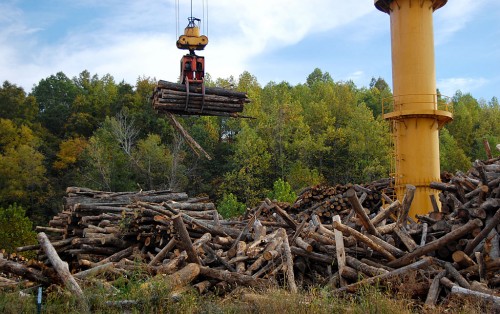 After shooting these frames, I walked back across the road where the wood chips were piled. “What are you doing?” Tim Hart, mill manager for Forbes, asked. His tone was curious, not confrontational. After identifying myself and my mission, we had a friendly and informative chat.
After shooting these frames, I walked back across the road where the wood chips were piled. “What are you doing?” Tim Hart, mill manager for Forbes, asked. His tone was curious, not confrontational. After identifying myself and my mission, we had a friendly and informative chat.
Missouri Fibre takes scrap wood not suitable for lumber and turns it into wood chips and mulch. The chipper is set up to handle wood up to 24 inches thick. “We can actually handle a little larger, but we tell the suppliers 24 inches, knowing that they’ll send us some slightly larger.” This is the big brother to the wood chipper you might see on your street devouring small tree branches.
The crane we were watchng was erected in 2002 at a cost of two million dollars. The operator is sitting about 90 feet above the ground and the boom is about the same length.
Mill ships about 250,000 tons a year
 The wood is a mixture of everything cut locally, but it’s mostly hardwood – oak, cherry, dogwood and ash. Pieces that are too large to run through the chipper are used as firewood.
The wood is a mixture of everything cut locally, but it’s mostly hardwood – oak, cherry, dogwood and ash. Pieces that are too large to run through the chipper are used as firewood.
Tim said the mill ships out 200 to 250-thousand tons of material a year, mostly by barge. “The [2011] flood slowed us down. We couldn’t ship by barge, so we had to use trucks.”
Ready for more logs
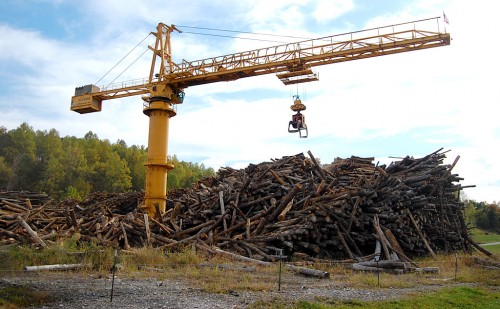 Tim said the Cape mill is the largest the corporation’s half-dozen scattered throughout the state. The demand for newsprint and office paper is down, he said, but an increase in the amount of biofuel needed has helped to offset the drop. The mill employs about six workers for its five-day-a week operation.
Tim said the Cape mill is the largest the corporation’s half-dozen scattered throughout the state. The demand for newsprint and office paper is down, he said, but an increase in the amount of biofuel needed has helped to offset the drop. The mill employs about six workers for its five-day-a week operation.
It’s pretty amazing what you can run into if you aren’t afraid to go down unfamiliar roads and talk to strangers.

